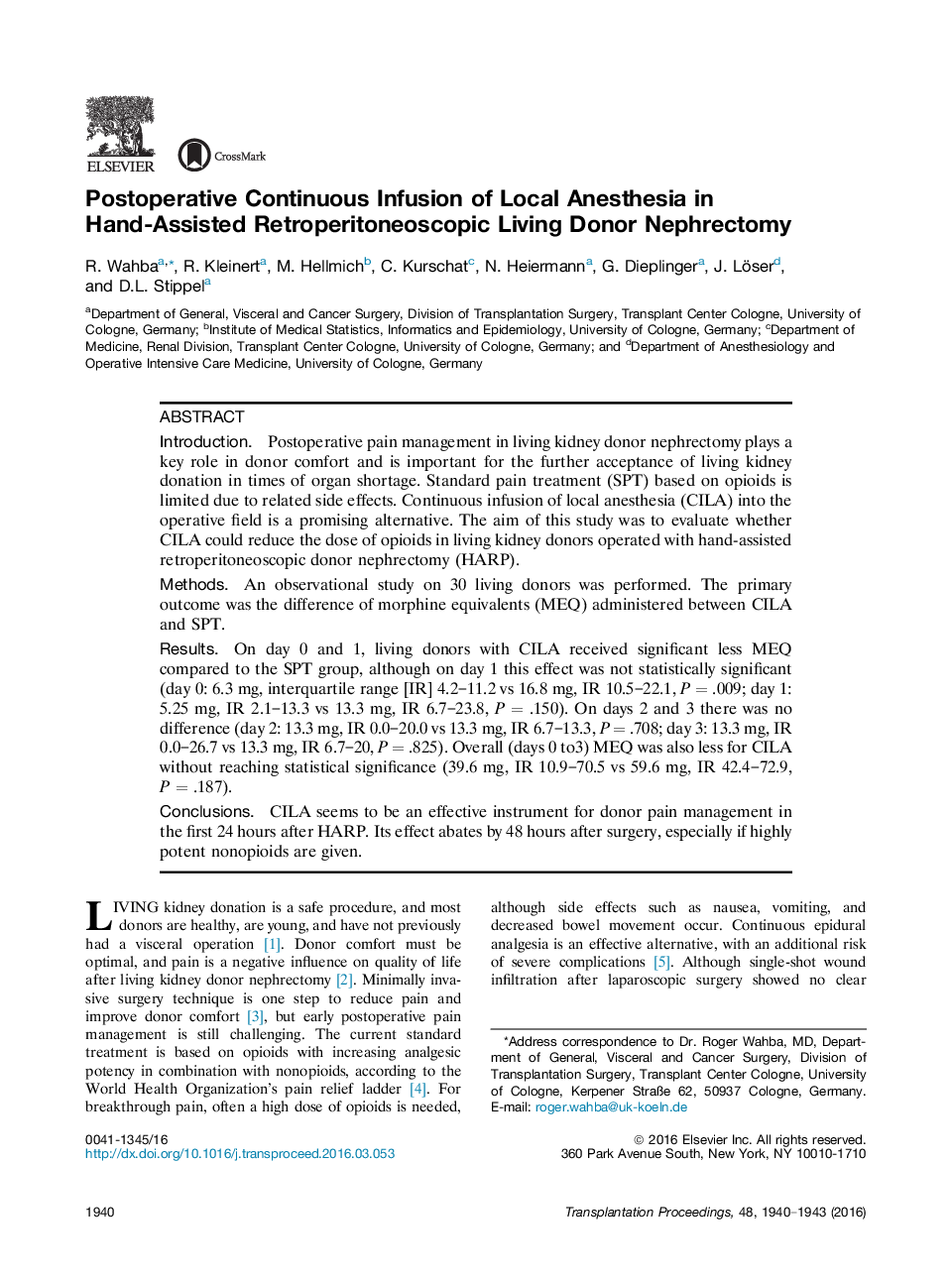| Article ID | Journal | Published Year | Pages | File Type |
|---|---|---|---|---|
| 5729126 | Transplantation Proceedings | 2016 | 4 Pages |
â¢Continuous infusion of local anesthesia (CILA) in hand-assisted retroperitoneoscopic living donor nephrectomy is an effective tool to manage pain.â¢CILA significantly reduces the dose of opioids in the first 24 hours after surgery.â¢Thereafter, the effect of CILA decreases.
IntroductionPostoperative pain management in living kidney donor nephrectomy plays a key role in donor comfort and is important for the further acceptance of living kidney donation in times of organ shortage. Standard pain treatment (SPT) based on opioids is limited due to related side effects. Continuous infusion of local anesthesia (CILA) into the operative field is a promising alternative. The aim of this study was to evaluate whether CILA could reduce the dose of opioids in living kidney donors operated with hand-assisted retroperitoneoscopic donor nephrectomy (HARP).MethodsAn observational study on 30 living donors was performed. The primary outcome was the difference of morphine equivalents (MEQ) administered between CILA and SPT.ResultsOn day 0 and 1, living donors with CILA received significant less MEQ compared to the SPT group, although on day 1 this effect was not statistically significant (day 0: 6.3 mg, interquartile range [IR] 4.2-11.2 vs 16.8 mg, IR 10.5-22.1, PÂ = .009; day 1: 5.25 mg, IR 2.1-13.3 vs 13.3 mg, IR 6.7-23.8, PÂ = .150). On days 2 and 3 there was no difference (day 2: 13.3 mg, IR 0.0-20.0 vs 13.3 mg, IR 6.7-13.3, PÂ = .708; day 3: 13.3 mg, IR 0.0-26.7 vs 13.3 mg, IR 6.7-20, PÂ = .825). Overall (days 0 to3) MEQ was also less for CILA without reaching statistical significance (39.6 mg, IR 10.9-70.5 vs 59.6 mg, IR 42.4-72.9, PÂ = .187).ConclusionsCILA seems to be an effective instrument for donor pain management in the first 24 hours after HARP. Its effect abates by 48 hours after surgery, especially if highly potent nonopioids are given.
